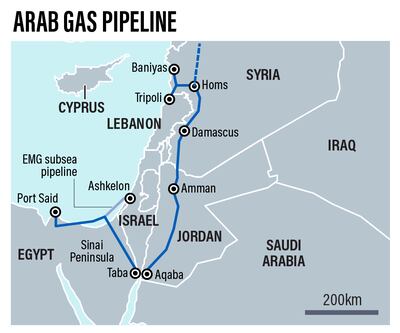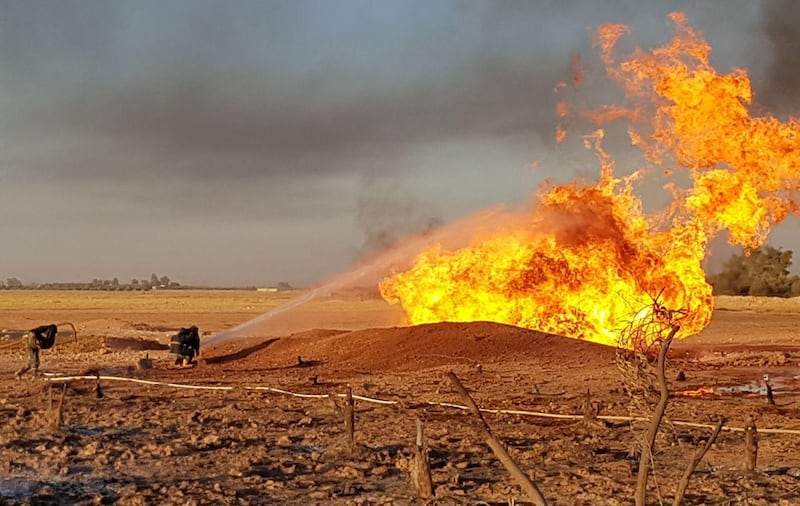The Arab Gas Pipeline is a feat of engineering at the heart of a supply grid between the key energy-importing states of the Middle East. The infrastructure, however, has faced several structural, logistical and security challenges over the years. Ministers from Egypt, Lebanon, Syria and Jordan are meeting today to consider the supply of gas through the pipeline to energy-deficit Lebanon, which is undergoing a major economic crisis. We take a look at this critical linchpin of Middle East energy supply and how it helps the energy importers of the region.
The pipeline
The Arab Gas Pipeline originates in Egypt, a significant source of gas supply in the Middle East and North Africa region. The Arab world's most populous country has become a major gas exporting hub in recent years following the discovery of the giant Zohr gas field, which has sparked a race for more resources along the Eastern Mediterranean. The pipeline, which stretches across 1,200 kilometres, snakes through Egypt, Israel, Jordan, Syria, Lebanon and Turkey. The infrastructure, commissioned in 2003 and built at a cost of $1.2 billion, has faced several challenges in exporting gas.
Supply of gas
Although the pipeline was built to help transport gas, it has proven to be unreliable. Originating in Arish, the largest city on the Sinai peninsula in Egypt, and built to transport an estimated 640 million standard cubic feet per day of fuel, the infrastructure has come under repeated militant attacks, especially the parts that are located close to the Sinai peninsula and Syria. In addition, a shortage of gas in Egypt have also previously disrupted supplies through the pipeline. Today, the pipeline flow of gas is around 70 to 120 million cf/d and supplies only to Jordan.

Egypt-Jordan-Israel
The stretch of pipeline connecting Arish with Jordan's southern Red Sea-facing port city of Aqaba was completed in 2003. The infrastructure, which was built at a cost of $200 million, extends further through the capital Amman and towards El Rehab on the Syrian border. A section of the original source pipeline also extends for 100km under the sea, connecting Sinai with Ashkelon in Israel, meeting half of the country's supply. Israel and Jordan began using the section of the pipeline that passes through their territories last year. Tel Aviv also began exporting gas to Amman as part of a gas supply agreement.
Syria
A 319km section of the Arab Gas Pipeline connects Jordan's El Rehab point with the western city of Homs in Syria. This portion of the infrastructure was completed in 2008 by the Syrian Petroleum Company and a subsidiary of Gazprom. However, it has not proved to be a very reliant carrier of gas. Last year, an explosion on the Syrian section of the Arab Gas Pipeline – which the government said was due to a terrorist attack – caused a blackout across the country.
Lebanon-Turkey-Iraq
The infrastructure was further extended to reach the northern Lebanese city of Tripoli. Gas supplies to Lebanon started in October 2009 but have remained suspended following the escalating conflict in Syria. The Syrian section of the pipeline connects to the 460 megawatt Deir Ammar power station, which can run on gas but burns only liquids at the moment. A section of the pipeline was extended from Homs to near Kilis in Turkey in order to provide Europe with an alternative source of supply. The section was built by Czech developer Plynostav. Iraq is also exploring the possibility of importing Egyptian gas through Syria, as it looks for alternatives to buying the fuel from neighbouring Iran. The plan was revived earlier this year following a meeting of the Syrian and Iraqi energy ministers.







